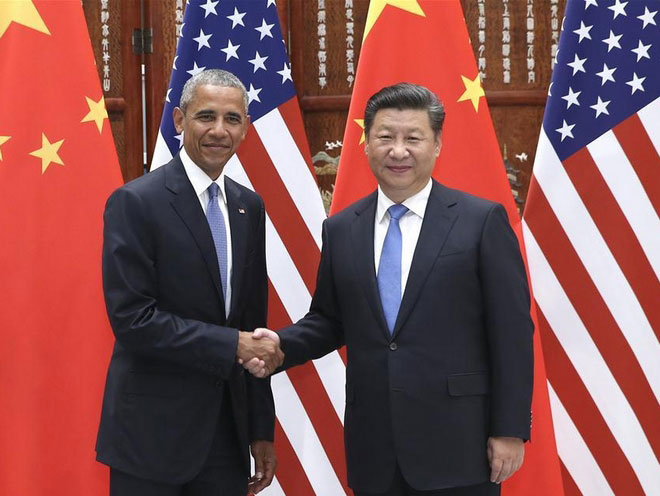
Chinese President Xi Jinping meets with US President Barack Obama, who is here to attend the G20 summit, in
Chinese President Xi Jinping and his US counterpart Barack Obama held their 8th bilateral meeting on Saturday in Hangzhou, where the G20 summit is being held, in a bid to further efforts to build a new type of great power relationship.
The meeting between the two leaders is regarded as one of the highlights during the G20 summit, which Chinese Foreign Minister Wang Yi said will promote the building of the new type of great power relationship.
At a press conference held on Friday, Chinese Vice Finance Minister Zhu Guangyao said that Xi and Obama have been keeping close contact at the strategic level since June 2013 when the two held a no-tie summit at the Annenberg Retreat at Sunnylands in Rancho Mirage, California.
President Xi has called on the world's two largest economies to forge a new type of great power relationship, which is characterized by "no conflict, no confrontation, mutual respect, and win-win cooperation".
US experts say that the Xi-Obama meeting is the most important bilateral meeting during the G20 summit at a time when China and the US still have disagreements over issues related to the South China Sea, deployment of the THAAD system in South Korea and economic policies.
The presidential meeting may open a window for the conclusion of the Bilateral Investment Treaty (BIT) which has been under discussion for eight years.
In 2015, the trade volume between China and the US reached $558.4 billion, with direct investment surpassing $140 billion. As of the end of 2015, the US has injected $77.47 billion into some 66,000 investment projects in China, and has become the sixth largest source of foreign capital for China. The direct investment by Chinese enterprises in the US has reached a combined $46.6 billion, making the US the fourth largest investment destination for Chinese investors.
According to China's Commerce Ministry, since 2008, China and the US have completed 26 rounds of negotiations for the BIT, with detailed discussions on offers of negative lists, which is seen as the biggest obstacle for the signing of the investment agreement.
The US expects China to open more industries to American investors, while China calls on the US to further simplify the investment review procedures set for Chinese enterprises.
Chinese officials said on Friday that a new impetus will be injected into the China-US economic ties if the two countries could make great breakthroughs in the BIT negotiation.
Cutting overcapacity
In his speech delivered on Wednesday, US Secretary of the Treasury Jacob Lew said that reducing excess factory capacity will be a key issue discussed during the G20 summit.
Lew said in his speech delivered at the Brookings Institution that President Obama will ask G20 member countries to take action to deal with excess factory capacity especially in the steel industry, saying that excess factory capacity will distort the market, hurt American workers' interests and go against the US goal of achieving robust, sustainable economic growth.
But Lew did not name the countries the US is concerned about.
At the 8th US-China Strategic and Economic Dialogue held in June, Lew explicitly expressed the US hope for China to deliver on its promise to reduce excess factory capacity.
In response to Lew's call, at Friday's press conference, Chinese Vice Finance Minister Zhu said China has taken the lead in cutting excess factory capacity, and urged the international community to do more instead of making lip service.
Over the year, some developed countries led by the US have snapped at China's excess factory capacity, with the EU imposing duties on steel imported from China.
Zhu said at the press conference that China had made efforts to reduce excess factory capacity in the steel and coal industries by setting up a fund worth 100 billion yuan used for subsidizing the laid-off workers.
The Chinese vice finance minister added that China had used legal means under the market rules to cut excess factory capacity, citing the fact that bankruptcy courts have been established nationwide.
(The article is translated and edited by Ding Yi.)
| Touched | Sympathetic | Bored | Angry | Amused | Sad | Happy | No comment |